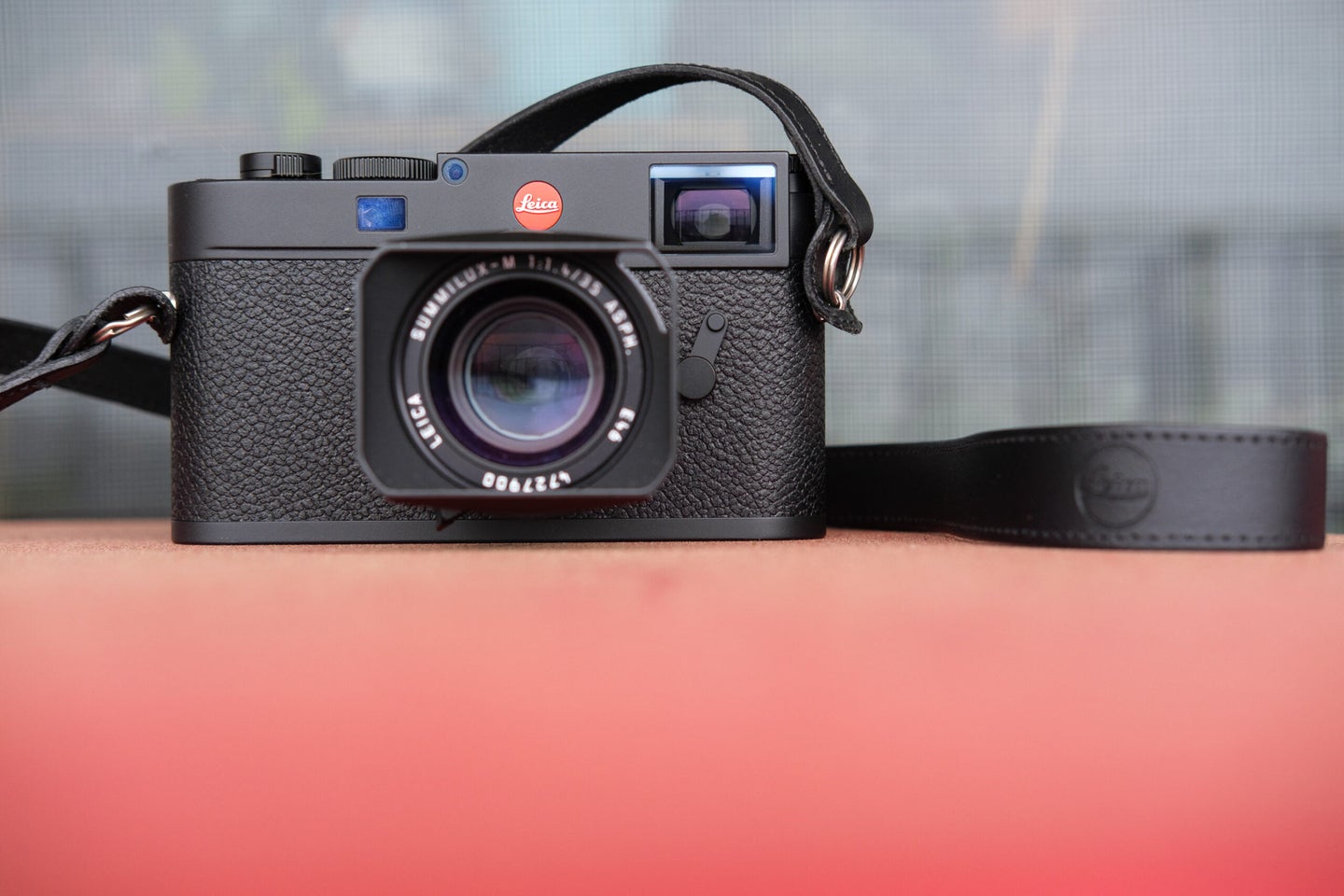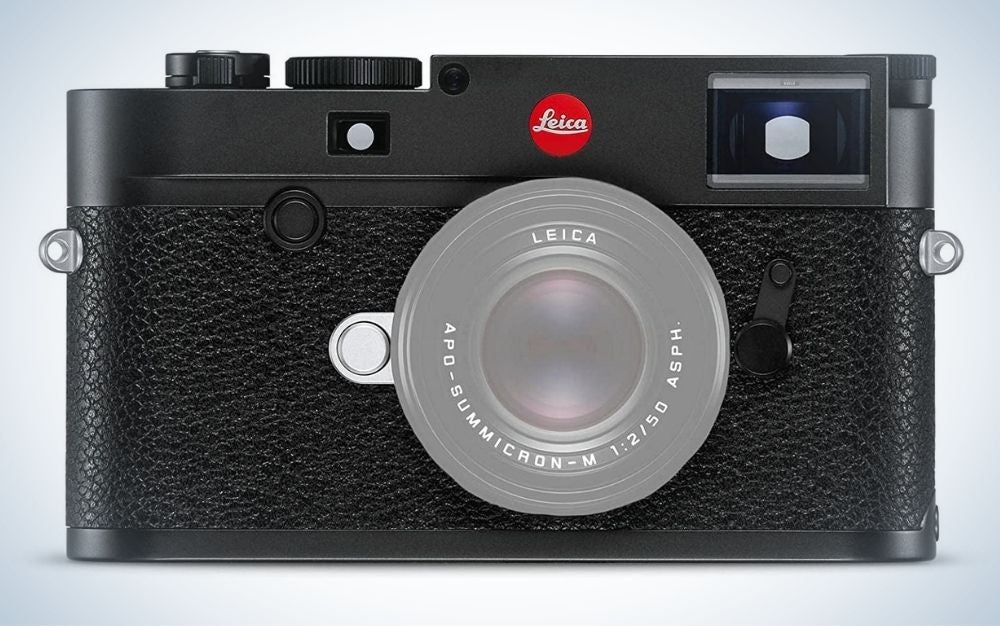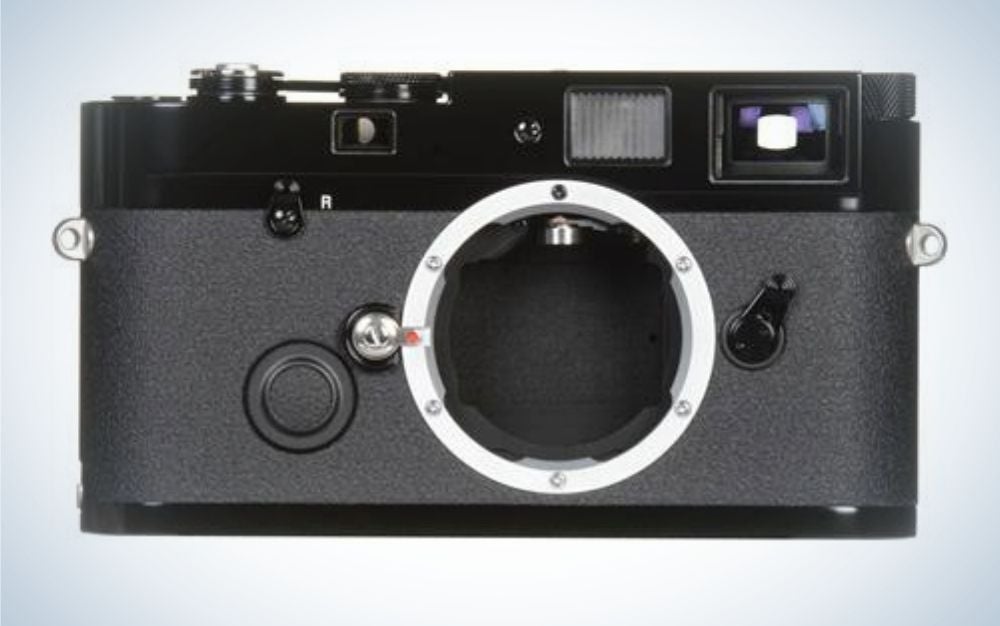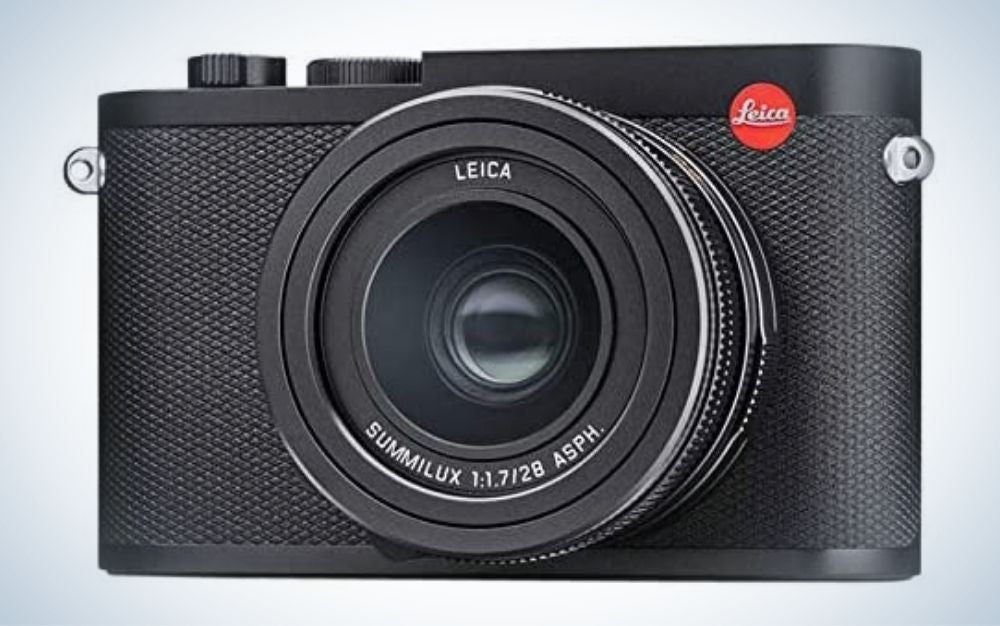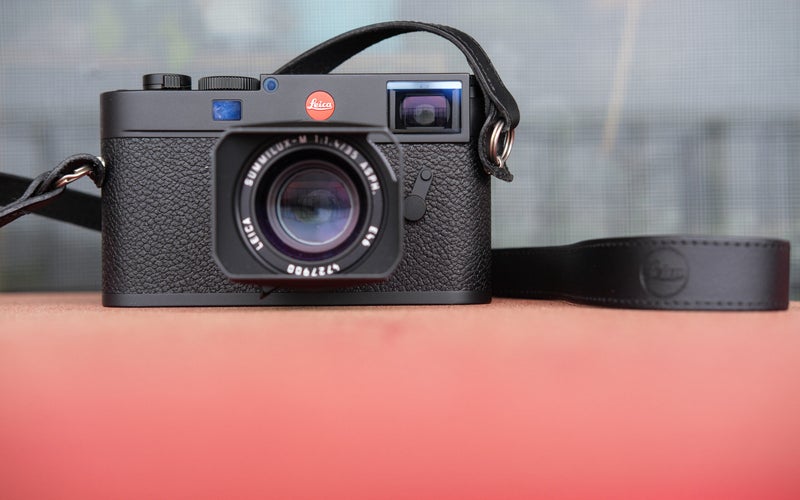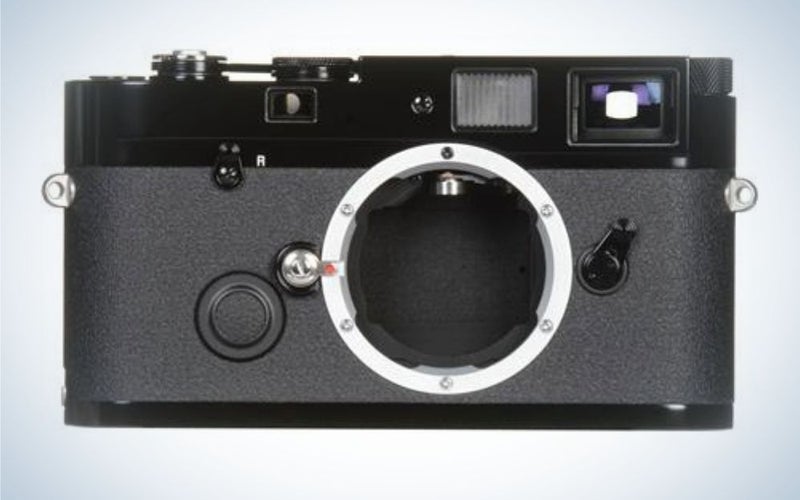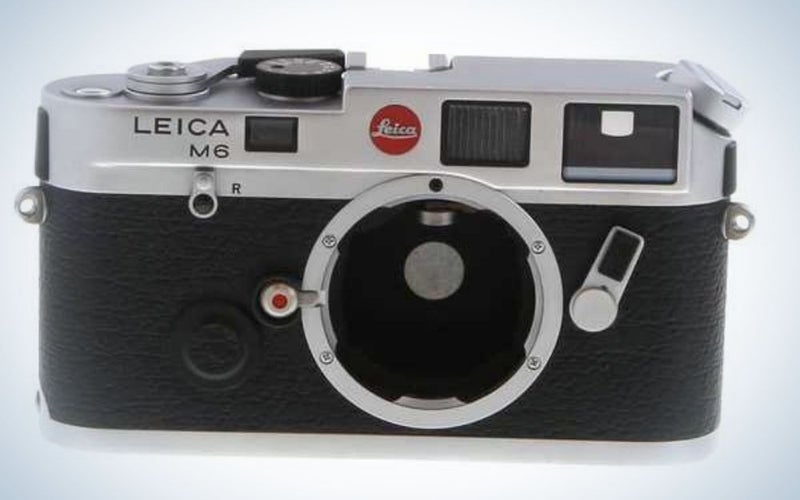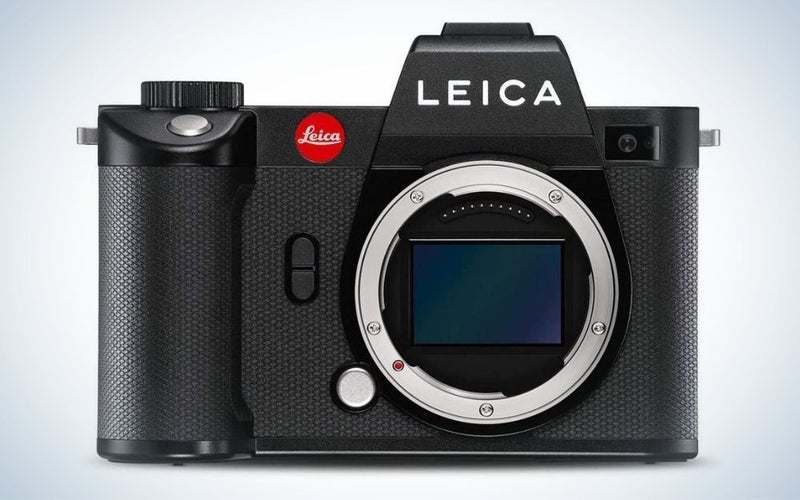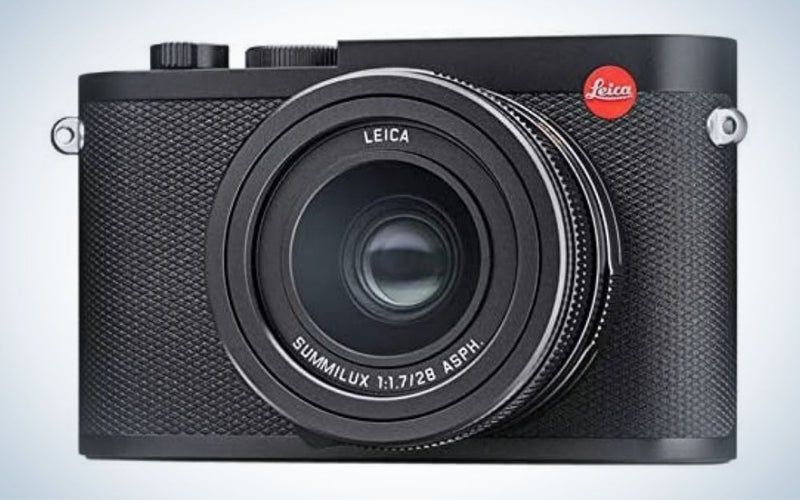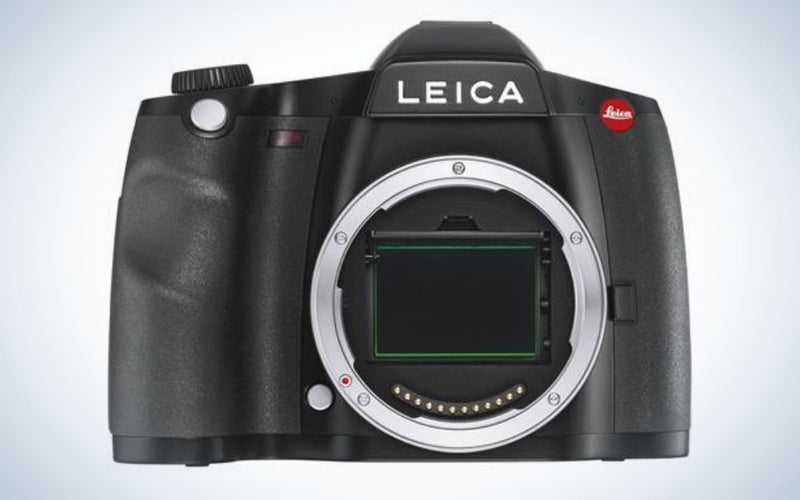We may earn revenue from the products available on this page and participate in affiliate programs. Learn more ›
Mention Leica cameras around photography nerds (like us) and you’ll almost certainly get one of a few different reactions. Some people will quickly tell you that they’re some of the finest photographic machines ever created. Some will tell you that Leica cameras have access to some of the best lenses of all time. And many, many people will tell you that Leicas come with extremely high price tags. In our eyes, all of that is true. While Leica cameras command high prices, they also offer a unique mix of photographic acumen and design that few other manufacturers can challenge (at least since Contax went away). This list of the best Leica cameras offers options for nearly any style of shooter. Just don’t expect to find any bargains.
- Best overall: Leica M11
- Best Leica film camera: Leica MP
- Best vintage Leica film camera: Leica M6
- Best mirrorless: Leica SL2
- Best compact: Leica Q2
- Best for professionals: Leica S3
How we chose the best Leica cameras
The writers and editors here at Popular Photography have been covering and working in photography for decades. In that time, we have used and reviewed nearly every major camera release from all the major manufacturers. We’re currently in the process of our full Leica M11 review, but it has been extremely impressive so far, which earned it its spot as our best overall pick.
The rest of the picks come from a mix of hands-on experience, editorial reviews, user reviews, and spec comparisons. We chose models currently in Leica’s lineup, as well as one legacy offering in the M6, which is still a great camera and will continue to be popular for years to come. We left out the compact offerings, which are largely just re-configured Panasonic cameras. They’re solid performers, but they’re overpriced for what they offer.
The best Leica cameras: Reviews & Recommendations
Best overall: Leica M11
Dan Bracaglia
Why it made the cut: Leica’s latest flagship camera offers some very clever new features, including a triple-resolution sensor inside a familiar, elegant body.
Specs:
- Resolution: 60 megapixels
- Lens mount: Leica M
- Dimensions: 9.3 x 8.5 x 5.8″
- Weight: 2.79 pounds
Pros:
- Exceptional feel and build quality
- High-res sensor can capture lower-res images with better noise performance
- Compatible with some of the best lenses ever made
- Improved multi-field meter makes reading light simpler
- Electronic shutter can go as fast as 1/16,000th second
Cons:
- Pricy (get used to seeing that here)
- No video features
With the M11, Leica created a photographer’s camera. It handles just as you’d expect an M-series body to. It doesn’t have autofocus. It doesn’t shoot video. It’s about as pure as it gets. But, don’t let that fool you into thinking it lacks advanced technology. The new 60-megapixel sensor inside offers three different resolution settings. You can capture the full 60 megapixels for maximum data, reduce it down to 36 megapixels for increased dynamic range, or drop it all the way to 18 megapixels for max dynamic range and improved low-light performance. It’s a clever system that gives this camera a ton of flexibility.
The M11 also offers a litany of other improvements over the M-series cameras that came before it. The battery offers more than 50 percent more power on a charge. You no longer have to remove the base plate in order to put in the battery or card. It has built-in storage for shooting without a card and its electronic shutter can hit 1/16,000th second if you need short, quiet shooting.
It’s a beautiful piece of gear and the photos that come out of it match its beauty.
Best Leica film camera: Leica MP
Leica
Why it made the cut: This 35mm camera’s name stands for “Mechanical Perfection” and it’s hard to argue otherwise.
Specs:
- Resolution: 35mm film
- Lens mount: Leica M
- Dimensions: 5.47 x 3.15 x 1.65″
- Weight: 1.5 pounds
Pros:
- All-mechanical operation
- Classic design
- Easy to service and get parts for
- Very inconspicuous
Cons:
- No autofocus
- Pricey
Unless you’re paying attention to the small details on Leica’s M-series film bodies, it can be hard to tell them apart. The MP is about as understated as they come. It has an all-black body with minimal branding on it. It doesn’t require a battery to operate unless you want to use the built-in meter, in which case it only requires a small cell.
If you’re hoping for bells and or whistles, you won’t find them here. It’s an all-metal body with a super-precise shutter that operates in near total silence. It doesn’t autofocus and you need to manually advance the film with your thumb on the advance lever. This is a fully manual camera and it’s meant to shoot the old school way. If you want something extremely reliable and very pleasant to use when you’re paying full attention to your photography, then this thing is worth the high price of admission.
Best vintage Leica film camera: Leica M6
Leica
Why it made the cut: This true classic can save you some money compared to the newer models.
Specs:
- Resolution: 35mm film
- Lens mount: Leica M
- Dimensions: 5.43 in × 3.03 in × 1.32 in
- Weight: 20.6 ounces
Pros:
- Cheaper than the new models
- Basically identical in function to modern bodies
- Beautiful
Cons:
- They have really gone up in price over the years
If you can’t swing the price of a brand new Leica body, the M6 still offers a fairly substantial discount and provides nearly identical performance. Unlike the M7 that came after it, the M6 still relied on fully mechanical operation, which means you don’t have to worry about electronics breaking down unless you’re worried about the shutter.
There are several versions of the M6, including one that offers TTL flash metering. That version is typically indicated as the M6 TTL. While that model does sometimes tend to be more desirable, I don’t think it’s worth paying extra for it unless you know you’re going to use it.
In recent years, the M6 has become one of the most fashionable cameras around, which has driven the price up. Celebrities and YouTubers have flocked to this camera as their go-to, so you’ll likely end up in a bidding war for one unless you buy from a dealer.
Best mirrorless: Leica SL2
Leica
Why it made the cut: If you want the Leica look with more modern features and comforts, then this is the body to get.
Specs:
- Resolution: 47.3 megapixels
- Lens mount: Leica L
- Dimensions: 5.75 x 4.21 x 1.65″
- Weight: 1.84 pounds
Pros:
- Excellent image quality
- Advanced video features
- Big electronic viewfinder
- In-body image stabilization
- Autofocus (which isn’t a given with Leica cameras)
Cons:
- Chunky
- Pricey
If you want to stay in the Leica family but you’re not the rangefinder type, the SL2 offers a much more familiar experience. It’s built in the DSLR-style with a raised electronic viewfinder and a very substantial hand grip. It offers a 47.3-megapixel sensor with full autofocus capabilities and object tracking.
The SL2 employs L-mount lenses, which came as part of a collaboration between Sigma, Panasonic, and Leica. The lenses aren’t cheap (you’re shocked, we know), but they are excellent.
Compared to an M-series body, this is a much different experience. The SL2 has a large 3.2-inch touchscreen and it can even shoot oversampled 5K footage for easier cropping to 4K.
This is a modern, high-end mirrorless camera that easily competes with models from Canon, Nikon, and Sony.
Best compact: Leica Q2
Leica
Why it made the cut: This compact camera offers a high-quality fixed-lens that’s perfect for walk-around shooting and street photography.
Specs:
- Resolution: 47.3 megapixels
- Lens mount: Fixed 28mm f/1.7
- Dimensions: 5.1 x 3.1 x 3.6″
- Weight: 1.58 pounds
Pros:
- Incredible lens performance
- Compact and easy to carry
- Impeccably designed
- Tactile manual controls
Cons:
- You have to really love the look of the 28mm lens
To call the Q2 a compact camera would undersell it. This 1.5-pound body has a 28mm f/1.7 Summilux lens permanently attached to the front. That means you don’t have to worry about buying additional lenses. It also means you don’t have to worry about dust getting inside the body or dirty lens contacts.
The Q2 offers a tactile shutter speed dial and an aperture ring on the lens, so it operates like a mini version of the actual Leica M. The Q2 has the same full-frame sensor inside as the advanced SL2, so the image quality is exceptionally high. The Q2 even has some straight up impressive stats, like 1/500th second flash sync speed, which is twice as fast as full-sized interchangeable-lens cameras.
You can get the Q2 in the standard model or as a black-and-white-only Monochrom version if you’re sure you really don’t want color.
Best for professionals: Leica S3
Leica
Why it made the cut: You’ll find a massive medium-format sensor at the heart of this pro-grade camera.
Specs:
- Resolution: 64 megapixels
- Lens mount: Leica S
- Dimensions: 6.3 x 3.15 x 4.72″
- Weight: 2.77 pounds
Pros:
- 30mm x 45mm sensor is larger than full-frame
- 15 stops of dynamic range
- Optical viewfinder with zero lag
- Extremely burly weatherproofing
Cons:
- Big
- Heavy
- Expensive
I could forgive you if you’ve never heard of the Leica S3. It’s $20,000 medium format DSLR with its own line of super-pricy lenses and enough bulk to tax the beefiest forearms. The sensor inside measures 30mm x 45mm, which makes it larger than a full-frame chip. All that real estate offers 64 megapixels of resolution and 15 stops of dynamic range, which makes it an excellent studio camera.
The body itself sports heavy duty ruggedization and weatherproofing, so it can stand up to hardcore professional work in whatever environment requires it.
Despite its 2020 release date, this isn’t a mirrorless camera, it’s a full-fledged DSLR. You can shoot in live view, of course, and it offers advanced tethering features because pros use that feature more than most other people. But, the viewfinder is totally optical and relies on a mirror box inside that makes an awesome noise when you fire the shutter.
What to look for when shopping for the best Leica cameras
Lens compatibility
Dig into Leicas camera arsenal and you’ll find a few different lines, all of which have their own distinct features, advantages, and disadvantages. Here’s a quick overview of the big players in Leica’s lineup. You’ll notice that some of the technical aspects like resolution and specific specs aren’t listed here and that’s because Leica clearly defines its different lines and doesn’t offer a ton of different models.
M-series
This is what most people think of when they picture a Leica camera. The company introduced the first M-mount camera in the mid 1950s and it immediately had a huge impact. It used bayonet-mount lenses that easily twisted on and off of the body much more quickly and easily than screw-mount glass. It also had the familiar film advance lever instead of knobs typical of rangefinders before that. Leica has stuck with a very similar rangefinder design ever since to great success. Pick up a brand new M11 and its lineage back to the original M3 is immediately clear.
S-series
This is Leica’s medium format digital line. These cameras offer larger, high-resolution sensors compared to the M-mount. They’re also much larger and command even higher prices. If you’re looking for a walk-around camera, then the S-series likely isn’t for you. These bodies belong in the studio or other controlled environments.
Q-series
Rather than relying on a system of interchangeable lenses, the Q2 offers a fixed prime lens on the front with a full-frame, high-res sensor inside. It’s a compact taken to the extreme and it’s wonderful.
SL-series
Sometimes overlooked, Leica offers a more traditional mirrorless camera. The SL2 encompasses a full-frame sensor and offers interchangeable lenses via the L-mount, which it co-developed with Panasonic and Sigma. It’s a high-performance machine with several extremely lux lens options.
Film or digital?
Yes, Leica is one of the few camera manufacturers still putting out film bodies here in 2023. Right now, it’s basically limited to the M-A and the MP, but both are spectacular. While digital Leica bodies hold their value much better than other digital options, film Leicas tend to get even more desirable as they go along.
Legacy versions
If you’re looking for a film Leica, there are several great models out there in the world that you can get for cheaper than a new model. Even models like the M6, which has skyrocketed in value in recent years, can still cost you roughly half of what it would for a brand new MP. Because Leica’s designs haven’t changed all that much, they’re often relatively straightforward to get repaired.
Even some of the older digital Leica M bodies still perform very well and deserve a look.
Color or black-and-white?
If you’re looking for a modern camera that shoots native black-and-white photos, your options are extremely limited. You have the odd medium format option or the Leica Monochrom cameras. These bodies have dedicated monochrome sensors that don’t require colored filters. As a result, they can pull in more light, recreate more detail, and provide a more film-like look due to the arrangement of the noise/grain. Leica makes an M-series Monochrom and a Q2 Monochrom, so you can have a rangefinder or a fixed-lens rangefinder. They’re specialty cameras, but they’re very cool.
FAQs
Q: What is the most expensive Leica camera?
If you’re talking about typical Leica cameras in the company’s current lineup, then the $20,000 S3 medium format camera takes that crown. If you’re talking about limited-edition models, then the prices can get extremely absurd. If you’re talking about vintage historic Leicas, you need Elon Musk money to play in that game.
Q: How much does a Leica camera cost?
If you’re going to spend the cash on a new M11, which will last you many, many years, then you can expect to pay about $9,000 before tax. Keep in mind that you’ll also need to buy a lens. The 50mm f/2 Summicron is a very standard starter lens and costs just over $2,500. If you want to go with a third-party lensmaker, you can save considerably money there.
Q: Do professional photographers use Leica?
Some pros love Leicas. You likely won’t find them on the sidelines of NFL games or anything like that, but some high-end wedding and portrait shooters love their Leicas. They’re more than capable of professional work, but it’s a matter of preference.
Final thoughts on the best Leica cameras
If you’re going to buy a digital Leica right now, the M11 is a fantastic option. It’s a perfect mix of high-end tech with old-school design. If you’re in the market for a film camera, it’s also hard to beat the MP if you can afford the cost. Whatever you buy, though, it will likely last you a long, long time.
